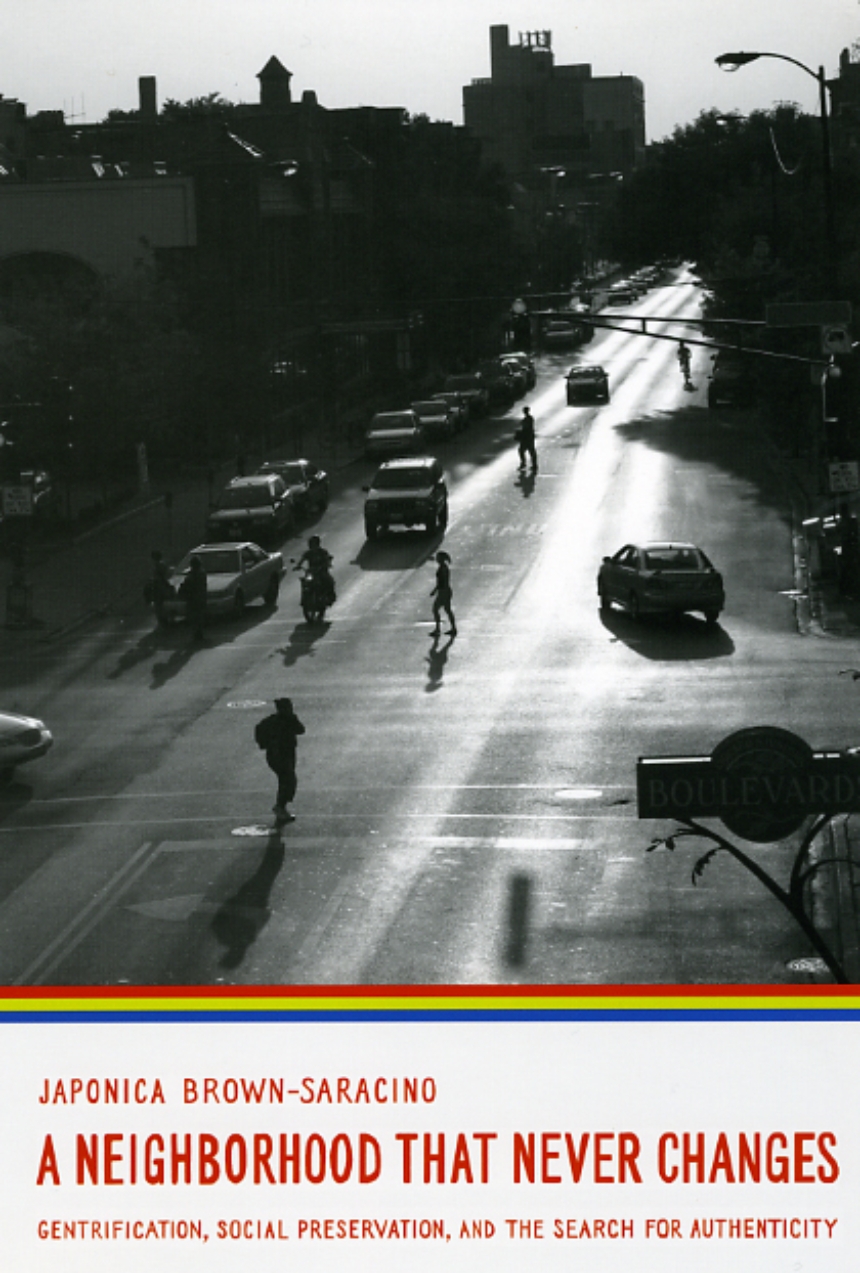A Neighborhood That Never Changes
Gentrification, Social Preservation, and the Search for Authenticity
A Neighborhood That Never Changes
Gentrification, Social Preservation, and the Search for Authenticity
Newcomers to older neighborhoods are usually perceived as destructive, tearing down everything that made the place special and attractive. But as A Neighborhood That Never Changes demonstrates, many gentrifiers seek to preserve the authentic local flavor of their new homes, rather than ruthlessly remake them. Drawing on ethnographic research in four distinct communities—the Chicago neighborhoods of Andersonville and Argyle and the New England towns of Provincetown and Dresden—Japonica Brown-Saracino paints a colorful portrait of how residents new and old, from wealthy gay homeowners to Portuguese fishermen, think about gentrification.
The new breed of gentrifiers, Brown-Saracino finds, exhibits an acute self-consciousness about their role in the process and works to minimize gentrification’s risks for certain longtime residents. In an era of rapid change, they cherish the unique and fragile, whether a dilapidated house, a two-hundred-year-old landscape, or the presence of people deeply rooted in the place they live. Contesting many long-standing assumptions about gentrification, Brown-Saracino’s absorbing study reveals the unexpected ways beliefs about authenticity, place, and change play out in the social, political, and economic lives of very different neighborhoods.
352 pages | 22 halftones, 3 maps, 10 tables | 6 x 9 | © 2009
Fieldwork Encounters and Discoveries
Geography: Urban Geography
Sociology: Social History, Urban and Rural Sociology
Reviews
Table of Contents
Preface ix
Acknowledgments
Introduction
1 The Research Sites and Methods
2 Beyond Pioneering: Social Homesteaders as Uneasy Gentrifiers
3 Social Preservation
4 The Varying Strategies of Social Preservation
5 The Real People: Selecting the Authentic Old-Timer
6 Locating Social Preservation
7 Self-Representation: Old-Timers’ Perspectives
Conclusion
Appendix 1: Research and Sampling Methods
Appendix 2: Interview Guide
Notes
References
Index